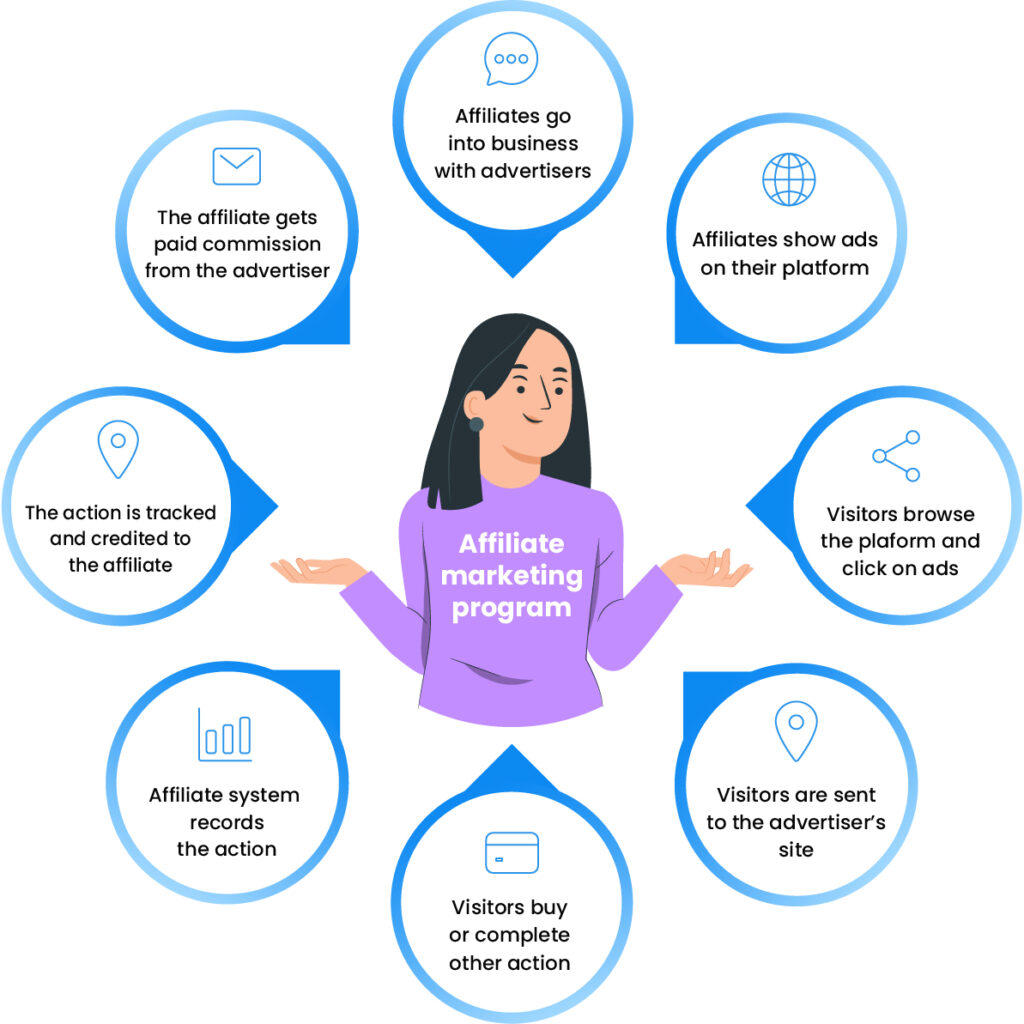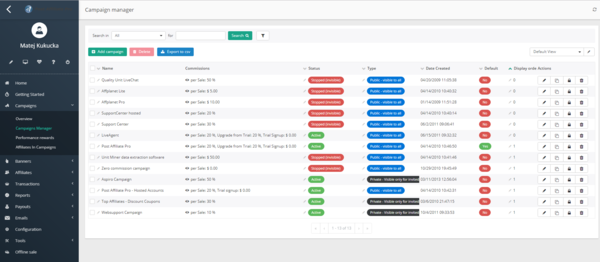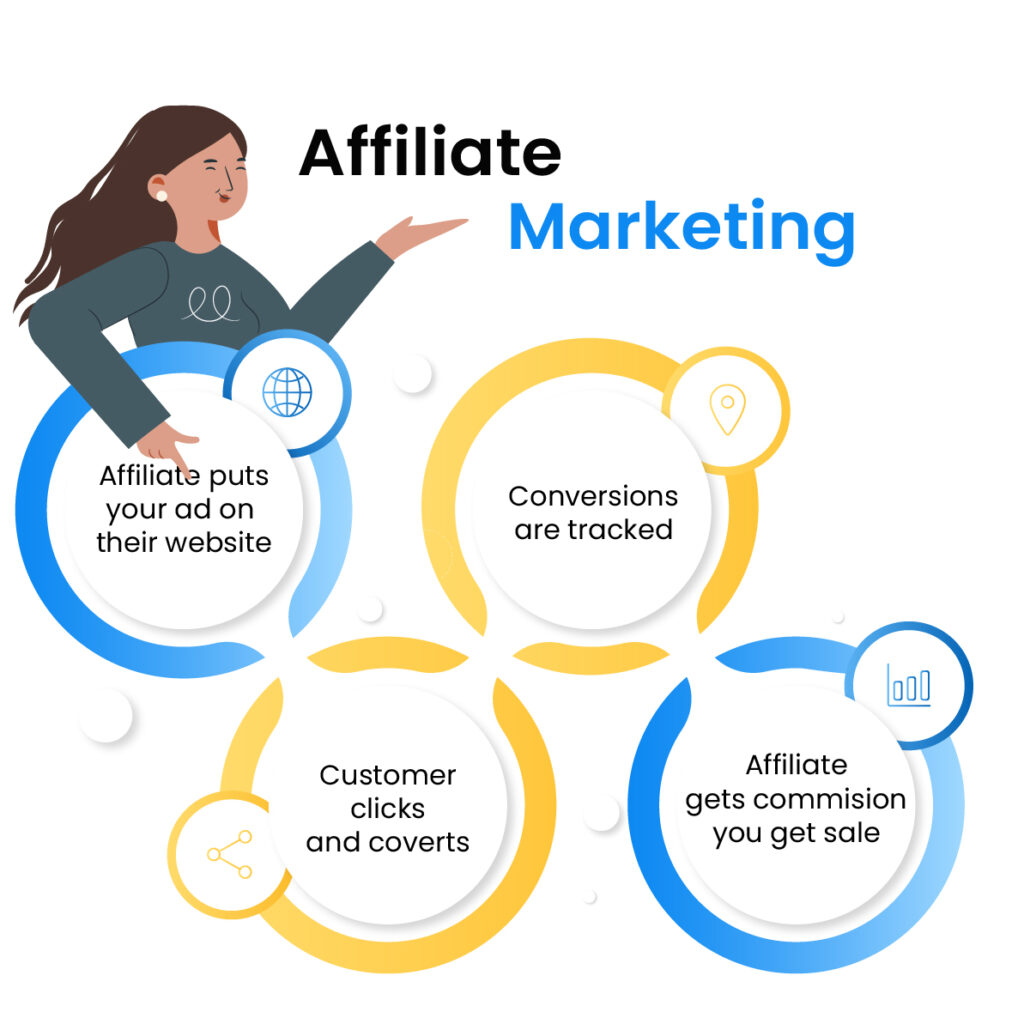If you are running a website or a blog, you must have heard of affiliate marketing. It’s one of the most popular profit generation models because it gives you the opportunity to earn money without investing too much extra effort.
This is a dream come true for millions of publishers worldwide, so don’t waste your chance to grab a small portion of the market share. However, you need to understand how the system works before actually joining the game.
Our mission is to show you everything you need to know about affiliate marketing, so keep reading to learn how to start generating affiliate sales.
The Background Of Affiliate Marketing: Definition And Stats
Since this is a step-by-step guide, we have to start from scratch and explain the basics before moving on to the more complex concepts.
By definition, affiliate marketing is an advertising model where a company pays compensation to third-party publishers to generate traffic or leads to the company’s products and services. In other words, publishers get paid to promote and sell products or services through their own websites.
But as a publisher, you must select products carefully because you don’t want to market items that have nothing to do with your content and don’t relate to your target audience. The goal is to act as an industry thought the leader who has the right and credibility to promote certain brands or services.
If everything sounds too vague and you still can’t grasp the sheer size and the power of affiliate marketing, here are some stats that shed a light on this industry:
- Affiliate marketing is generating 16% of all online orders.
- Over 80% of brands rely on affiliate programs.
- Almost 40% of marketers call affiliate marketing one of the top customer acquisition methods.
- The US affiliate marketing spend is due to reach $8.2 billion by 2022.
- Affiliate marketing ROI in the UK amounts to £15 per every £1 spent.
How To Start An Affiliate Marketing Campaign
Having your own blog or a website is the basic precondition for becoming an affiliate marketer. But things are not that simple and you’ll have to do a lot of work before you begin to capitalize on your content creation activities. To make the process more transparent, we are going to divide it into several units:
- Launch a website or a blog: As we already mentioned, launching a website or a personal blog is the first step. You can hardly win over the audience by publishing generic content, so we recommend you to focus on a specific industry or niche.
- Publish high-quality content: This is the critical phase because you must build a strong base of followers with lots of website visits on a daily basis.
- Search for products or services: Once you’ve got the first couple of steps covered, it is time to start searching for products or services that you can promote on your blog/site. There are no limits here, but you should definitely concentrate on items that correspond with the needs and interests of your target audience.
- Sign up for the corresponding affiliate program: There are tons of affiliate networks out there (we will discuss the best options later), so it’s up to you to find the ones that sell the targeted products.
- Create product-related content: You can publish promotional content in many different formats, but we will dedicate an entire section to this topic as well.
- Follow the results: The last step is to measure the results of your campaign, make adjustments (if needed), and enjoy the benefits of your work.
Finding The Best Affiliate Marketing Product
The time has come to think about choosing the right type of products for your affiliate marketing campaigns. Before you go into specifics, you need to consider a few details.
First of all, you should ask yourself: Why do I attract visitors to my blog or website? Which topics keep them engaged and interested? As soon as you answer these questions, you will know what and where to look for.
The point of affiliate marketing is to promote products that are perfectly aligned with the needs and expectations of your audience, which is why “relevance” becomes a key word here. For instance, bloggers who write about parenting can advertise a wide range of lifestyle products, but it would be a disaster to promote irrelevant items like software or mobile apps.
Now, affiliate marketing focuses on three types of products: physical, information, and services. Let’s check out the peculiarities of each group:
· Physical Products
Online commerce is flooded with physical products, so it shouldn’t be a problem to find items that suit the content of your website. However, this is also the reason why you will have to face some serious competition – there are probably hundreds of websites promoting exactly the same products as you. Besides that, commissions for physical products are usually low, ranging from 1% to 10% in most cases.
· Information Products
Affiliate marketing for information products is more demanding because it takes a genuine expert to promote and sell items successfully. However, it also gives you more room to express personal creativity and create content that doesn’t sound too salesy and pushy. At the same time, commissions for information products such as eBooks or online courses are much higher than those for physical products.
· Service Products
Service products represent another very lucrative affiliate opportunity. Services such as software or a website theme cost more than the majority or physical products, while they also give you a chance for recurring commissions. Speaking of commissions, you can expect anything between 15% and 30%.
How To Create Affiliate Content
There are many different ways to promote affiliate products, but some of them proved to be more productive than others. We believe these four methods to be most suitable for affiliate beginners.
1. Product reviews
Product reviews are direct and straightforward. If you already have a wide base of loyal fans, you can use this format to promote affiliate products of all types: physical, information, and services. The only thing you need to pay attention to is honesty.
Don’t betray the trust of your audience – it may give you a one-time benefit, but it will ruin your affiliate aspirations in the long run. Therefore, you have to be clear about your impressions and discuss both the positive and negative aspects of the product.
Such content always looks more convincing, while it cannot chase users away because they understand that no product is flawless.
2. Tutorials
Tutorials are a great affiliate marketing tactic because they are highly relevant and informative. What is a tutorial? It’s a comprehensive step-by-step guide that teaches users how to do something, just like the article you are reading right now. When you combine tutorials with concrete products or services, you get a valuable piece of affiliate content.
3. Comparison posts
Comparison posts are similar to product reviews, but this time you discuss and compare two products. Of course, the goal is to find a couple of products from the same niche and tell people the advantages and disadvantages of each one.
For instance, you could compare Samsung Galaxy S9 and iPhone X. It’s a trendy topic that definitely evokes curiosity among smartphone owners. However, keep in mind that it’s much better to focus on lesser-known niches because mobile phone topics are highly competitive and it’s hard to earn a position among top 10 Google searches in this area.
4. Email-based affiliate campaigns
Email-based affiliate campaigns are very effective because you don’t have to wait for users to come and visit your blog or website. Instead, you can make the first move and send a short email series to the subscribers.
This technique works well for publishers who have enough subscribers. What is “enough” depends on your field of work, but we believe it takes at least a thousand subscribers to run a successful email-based affiliate campaign.
Top Affiliate Marketing Networks
Affiliate marketing is a huge industry, so it’s not surprising to see so many platforms available online. It often makes the selection process difficult because you cannot focus on dozens of networks simultaneously, especially as a beginner affiliate.
We want to help you narrow down the options, so let’s take a look at the best affiliate marketing platforms here:
- Amazon Associates: The world’s largest eCommerce also developed one of the biggest affiliate marketing programs. Needless to say, Amazon Associates is product-oriented.
- FlexOffers: This network successfully operates for more than 10 years already. They offer a professional service and build close relationships with over five thousand publishers internationally.
- Clickbank: If you are interested in promoting digital products, Clickbank might as well be the best solution for your campaigns.
- ShareASale: It’s a well-known affiliate marketing platform that earns trust thanks to the speed, customer service, and precision.
- PeerFly: With accelerated payment options and guaranteed top payouts, PeerFly represents one of the most reliable affiliate marketing networks globally.
- Avangate: This cloud-based network specializes in digital products and services. Avangate cooperates with more than four thousand publishers in over 180 countries all over the globe.
- Rakuten: It’s a genuine affiliate marketing giant that ranks among the top five largest platforms. Rakuten serves a network of almost 20 million customers.
- CJ Affiliate: CJ Affiliate pays $1.8 billion of publishers’ commissions annually. It’s a global network of almost five million consumers and they always use state of the art reporting tools to help you manage campaigns more efficiently.
- Olavivo: If you are interested in cryptocurrencies, online retail, lifestyle, and health products, you should check out Olavivo.
- Commission Factory: It’s a dominant player in the Australian affiliate market.
A Thing Or Two About Affiliate Urls
If you’ve ever followed any affiliate links, we bet you’ve noticed that they mostly look confusing, random, and ugly. We strongly recommend you to improve your own URLs for two main reasons:
- A tailored link is much simpler and more beautiful.
- A customized URL doesn’t scream “affiliate marketing” in the face of your followers.
There is a simple way to rearrange affiliate URLs: use a plugin such as Pretty Links. A tool like allows you to create user-friendly links that look ordinary and hide your affiliate intentions.
The Benefits Of Affiliate Marketing
We saved the best for last. Now that you know how to join the affiliate marketing game, we want to give you an extra push by presenting the benefits of becoming a publisher. It’s almost impossible to name every single advantage, but the fundamental pros are here:
- It’s a source of passive income: Affiliate publishers can earn tons of money simply by doing the same job they’ve always done. Just keep publishing quality content and you’ll get an excellent source of passive income.
- Tracking is easy: Affiliate links are easy to monitor and you always get the credit you deserved.
- Reputation building: As an honest and professional affiliate partner, you can strengthen your online reputation even further.
- SEO: With a little bit of luck, you will also improve the position of your pages in Google searches. As you keeping building professional authority, you can expect even more people to come and visit your website.
- Networking opportunities: Successful affiliates cooperate with lots of clients, so it becomes another opportunity to grow the network of professional connections.
Conclusion
Affiliate marketing is one of the fastest-growing industries globally because it helps merchants to sell more products while providing a new source of passive income for publishers. If you are a blogger or owner of a website who attracts a lot of visitors, you should definitely seize the opportunity to launch your own affiliate campaigns.
In this post, we explained everything you need to know about affiliate marketing – what it is, how it works, and all other details that make this business so complex and exciting. Make sure to use our tips, but don’t hesitate to leave a comment if you have any questions – we would be glad to answer you!
Share this article
Explore Post Affiliate Pro's comprehensive Affiliate Marketing Glossary to enhance your industry knowledge with easy-to-understand definitions of essential terms. Perfect for marketers seeking to understand the fundamentals and advanced concepts, this glossary helps you master the language of affiliate marketing. Visit now to boost your expertise!















